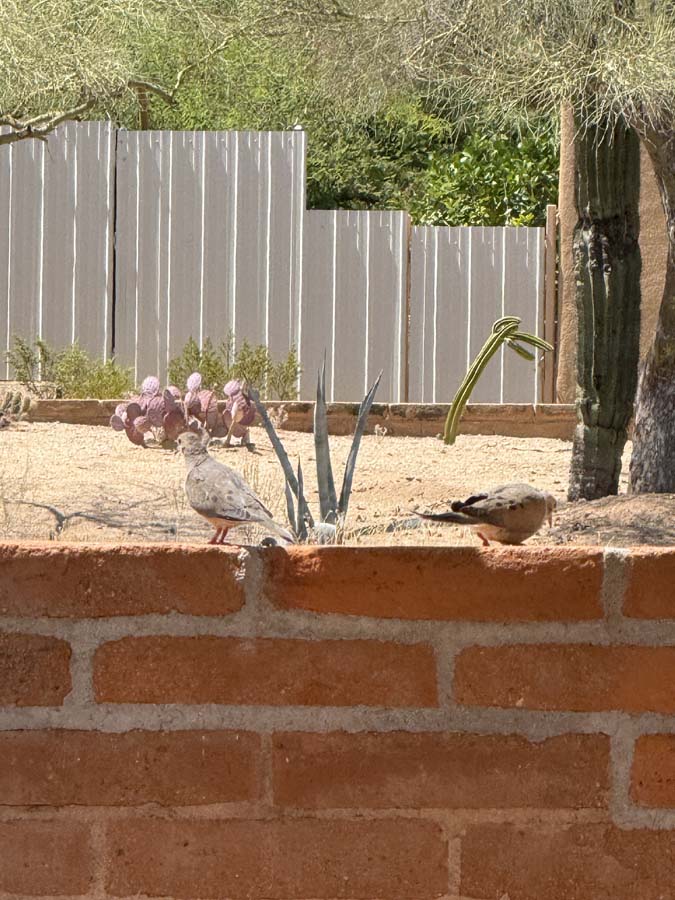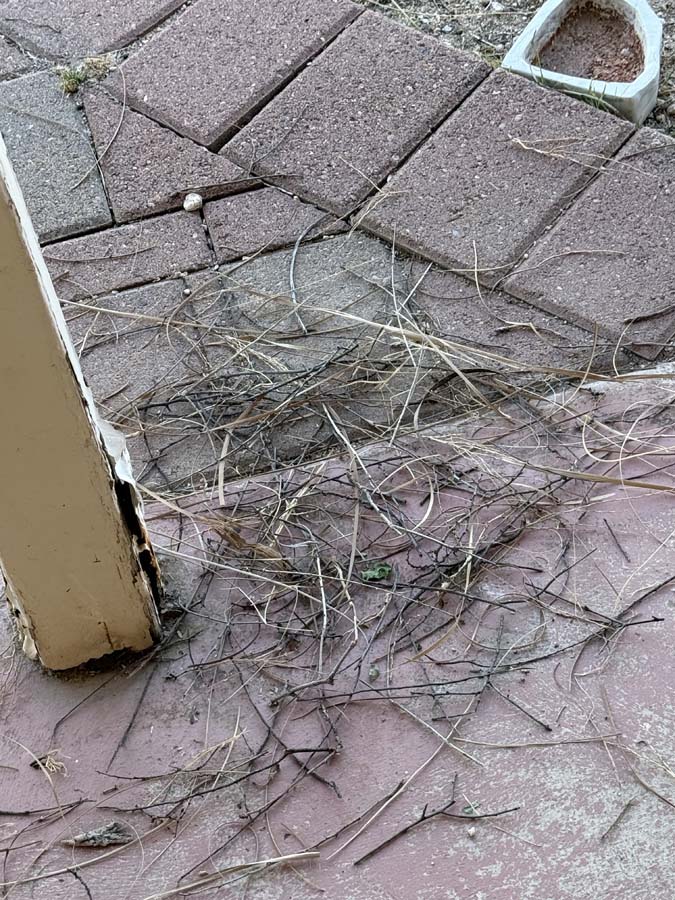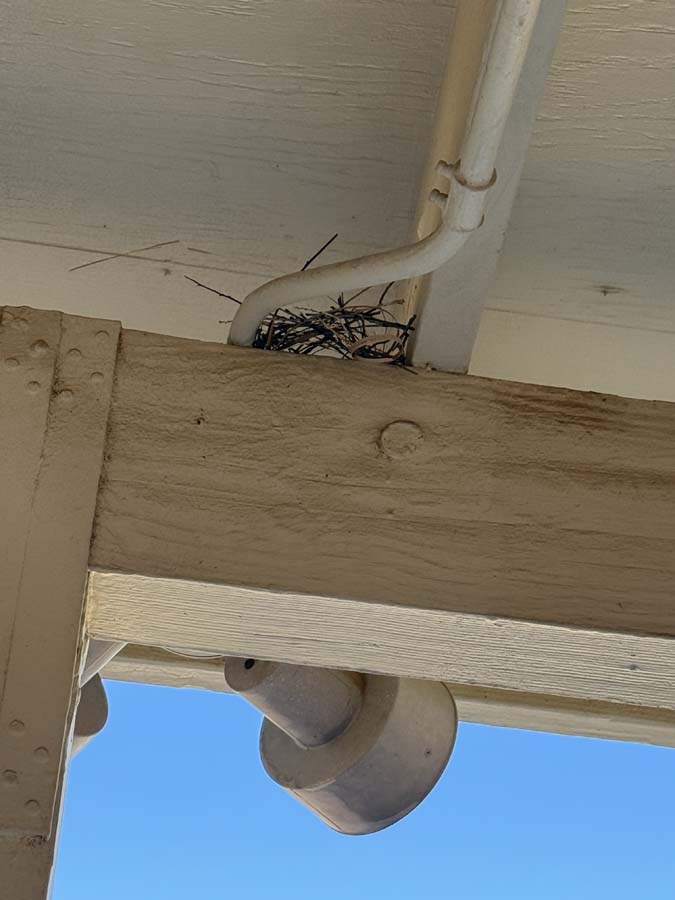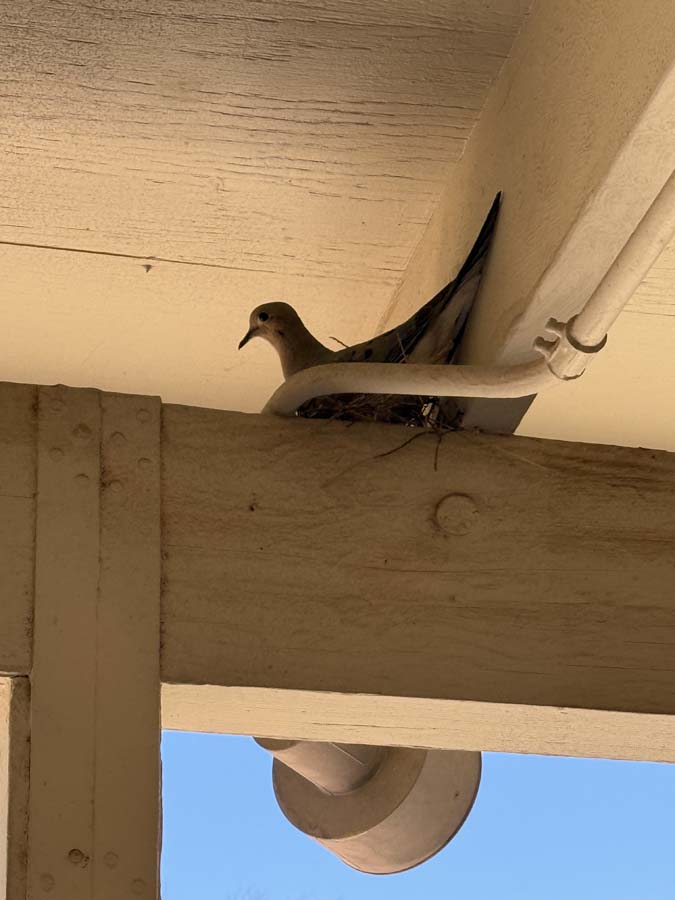As a biologist and reptile enthusiast, I try not to disparage any animal just trying to live its life and raise its family. However, I must admit, I’ve observed some… “unique” architectural choices from a particular pair of mourning doves (Zenaida macroura) when it comes to nest site selection and construction!
Mourning doves are incredibly resilient, thriving even in the challenging environment of the Sonoran Desert. Their impressive flying abilities allow them to cover vast territories to feed themselves year-round, which in turn enables them to produce several broods of young annually. The courtship ritual is quite a spectacle, beginning with the male, puffed up and hunched, chasing after the female. Sometimes, a second puffed-up male will join the pursuit, but once the female makes her decision, she remains devoted to her chosen mate.

A Garage Gate Nest? Questionable Real Estate Choices
My concern about the mental acuity of this particular pair began earlier this spring. I park my car in a garage with an automatic door. My routine involves opening the garage door as I finish feeding the reptiles in the reptile room, then closing it behind me when I leave, and repeating the process upon my return. This specific dove pair decided to build their initial nest directly on the garage door opening mechanism, right above my car! This meant that nearly every day, one or both parents were either trapped inside or outside their nesting area. This went on for a couple of weeks, and I genuinely hoped they would opt for a more practical nest location.
A Flimsy Foundation: The Latest Attempt
Just a couple of days ago, I walked out my back door and discovered a scattered collection of twigs and debris on my patio. I instantly recognized it as the unfortunate remains of my pair’s most recent nesting attempt. The male had dutifully provided these bits of construction material, and the female had attempted to weave them into a nest. I’m not certain what caused the nest to be hurled to the ground – perhaps a strong gust of wind or even exuberant wing flapping? Mourning dove nests, after all, are famously known for their flimsiness.

However, despite these setbacks, my determined pair of parents persevered! An incredibly flimsy new nest has now been constructed under the roof of my porch.

Mourning dove females typically lay two eggs, and both parents share the incubation duties. The male generally sits on the eggs during the day, while the female takes over during the night. I’m not entirely sure who this is in the photo, as it was taken at sunset, but it’s likely the male.

Fast-Track Fledglings: A Short Stay
Thankfully, these nests don’t need to endure for very long. The eggs typically hatch in about 14 days, and the hatchlings, known as squabs, fledge in another two weeks. So, while I’m not sure this latest nest will last more than a month, if that, at least they’re no longer waiting for me to open the garage door!
P.S. I’ll be sure to post a follow-up if eggs and hatchlings make an appearance. Sometimes, you just have to wonder how some species manage to survive! Best of luck, little mourning doves! See you in the morning.
Are your young readers curious about the amazing adaptations of desert animals? Dive deeper into the world of wildlife with my engaging educational workbooks!